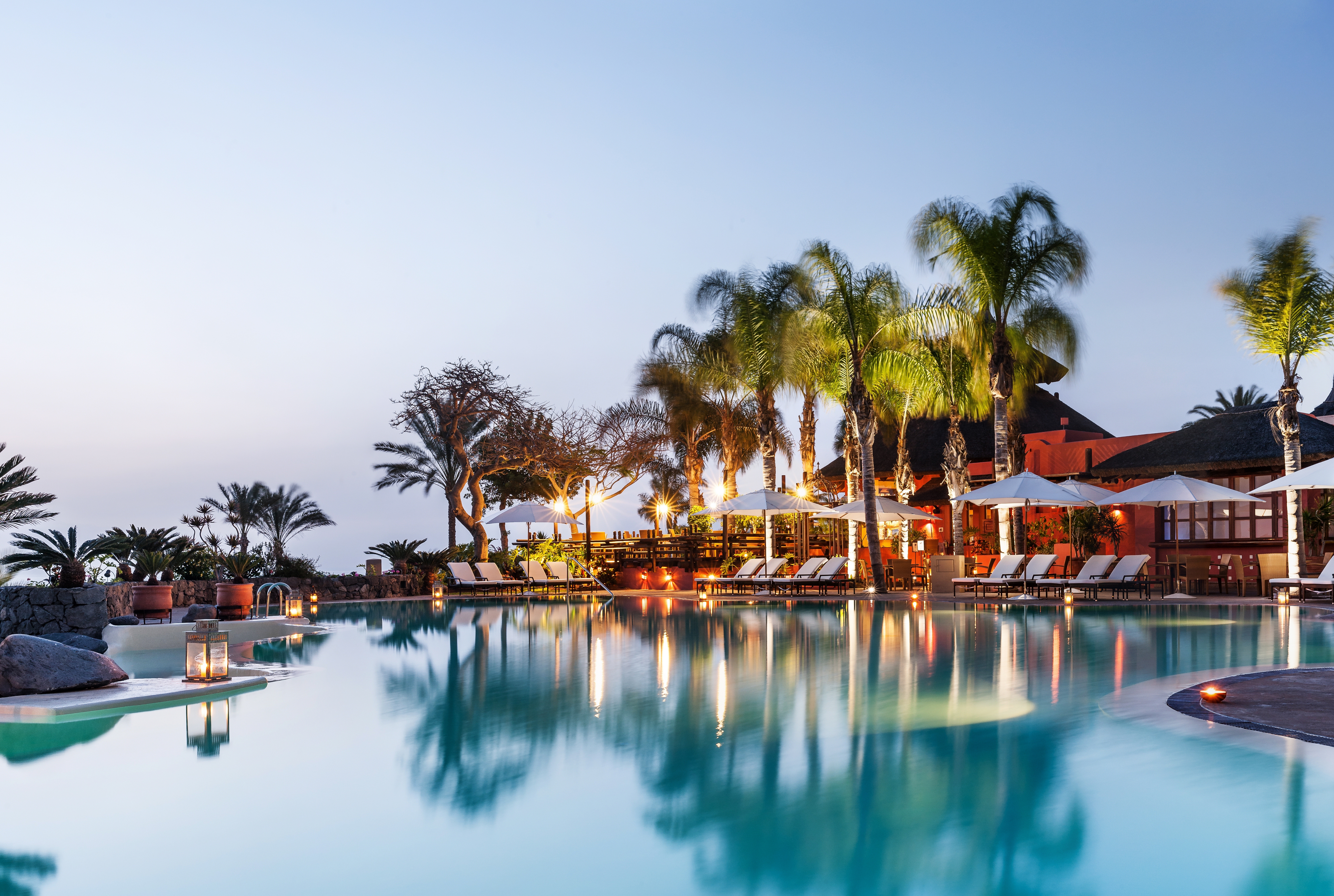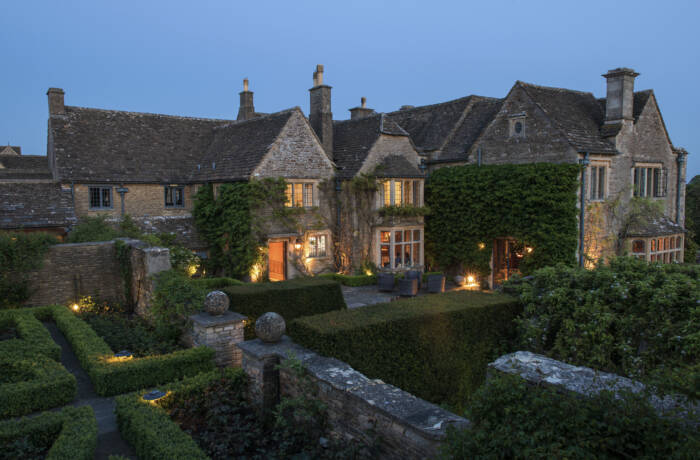On the south side of an island off the coast of Africa, yet pleasingly accessible, the Ritz-Carlton Abama is one of the most dramatic resorts in the world, as DARIUS SANAI discovers
A perfect storm in the luxury travel world has meant the world is unrecognisably smaller than just 30 years ago. We have seen a combination of escalating numbers of high net worth individuals, a global burgeoning of high-quality airlines and operators (and private jet-friendly airports), rapidly developing destination countries and destination management organisations, spectacular new hotels and the internet to make it all transparent. And it means that what was unspeakably exotic a generation ago – Thai beaches, or hotels on stilts in the Indian Ocean – is mainstream now, and what was unimaginable – bareback riding to the Angel Falls, hikes to meet isolated villagers in Papua New Guinea – is quite feasible.
There is one destination I visited recently that could belong to both the ‘hot discovery’ category and the mainstream category simultaneously. I could write that I spent a week on an island mountainside, on a cliff above the ocean, facing a volcano across the sea on a quasi-uninhabited island off the west coast of Africa. That Charles Darwin took inspiration from, and wrote about, the natural wonders of the volcanic island I stayed on; that its climate is preternaturally sublime, never too hot, cold, or wet; and that stargazers congregate here for its clear, pollution-free skies.
Read next: VIP tour of the Monaco Grand Prix with Rolex
I could also write that I spent a week in a luxury resort with seven swimming pools, three highly acclaimed restaurants (with a total of three Michelin stars), a golf course and a private beach – in the Canaries, one of the prime mass-market destinations for the people of industrialised northern Europe. Both stories are true and are, in fact, the same story.
As a child, I missed out on the Canary Islands boom, my parents preferring to take me to mainland Europe for our holidays. They became synonymous with a certain type of package holiday, so it is with some skepticism that one arrives in Tenerife. Then, in the rental car from the airport, you notice that the whole island is in fact one vast volcano rising from the sea bed. The height of the peak, far above, is 3,718m – high enough – but the whole mountain, from ocean floor to top, must be vast: it would dwarf Mont Blanc, western Europe’s highest mountain. That means you are always at some point on its flanks, whether driving along the motorway or sitting on a beach.
The Ritz-Carlton Abama is a cacophony of pink stone on the edge of this mountainside. It sits alone, and from the moment you enter the gates of the resort, the broad view in every direction lacks any of the overdevelopment of other parts of the island.
Read next: Charmed by Colombia’s most beautiful city, Cartagena
The balcony of our suite faced out over some gardens planted with subtropical flora; the gardens stopped at a cliff edge, underneath which was the hotel’s private white-sand beach (most beaches on the island have volcanic black sand). At night, sitting back on a lounger, sipping local Malvasia wine and dipping papas (tiny black potatoes, intensely flavoured, grown in volcanic soil), the sky was a ceiling, not a void. A hemisphere of stars rotated slowly, noticeably: constellations would move across the ceiling at set times every evening. Occasionally a marine bird, flying through the banana plantations that flanked the resort, would break the silence.
To get to the beach at Abama, you walk down through the gardens to the edge of the cliff, where you have two choices: a funicular lift with glass walls descending the mountainside, or a zigzag path through cacti and tropical flowers. Once at the bottom you are presented with a perfect semi-circle of beach, within the embrace of a sheltered bay. Directly in front of you is the volcanic island of Gomera, a national park, protected and wild. It is a big, green, upside-down cone rising out of the ocean.
There is no fighting for sun loungers here(we were there at peak season); you take your pick along the extensive sandy crescent and then swim in the sea (quite chilly, very clear, plenty of small fish for company) or go jogging along the beach, a few hundred metres from cliff wall to cliff wall.

Abama is dotted with very classy cafes and restaurants, the beach area being no exception. They all have the distinction of feeling like stand- alone, individual places with their own identity, destinations in themselves rather than outlets in a resort. The bartender at the beach cafe said he would never work elsewhere in the resort. “Here we can just see the sea, the sun, the island,” he smiled, laying down a mojito and a bowl of green olives. We sheltered from the sun under the palm trees planted along its terrace (it’s only a terrace – no indoor tables at all), sipped our drinks, watched people strolling on the beach immediately below, and then went for a stroll of our own.
Read next: Flight of the billionaire Flight of the billionaire
Adjacent to the beach to our left, we had seen children and adults diving off a rocky outcrop. Wandering over, we noticed that the other side of the outcrop featured several rockpools, perfect for wading through, and then turned into an extraordinary ancient lava field: smooth, black rock, almost soft to the touch, slipping into the ocean and home to hundreds of blue crabs of various sizes. Typically they were the size of an adult hand, but some monsters were twice that size; they would cling to the rock as a wave washed over them, oblivious, and then scuttle along at alarming speeds.
Dining that evening, we visited a restaurant called El Mirador, situated by the little funicular at the top of the cliff, surrounded by gardens and a long pool, and with even more dramatic views over to the island of Gomera. El Mirador’s speciality is local seafood and paella, something frequent visitors to Spain may be wary of, as it is the mantra of many a mediocre establishment. Our interest was piqued, though, by the fact that the restaurant runs its own paella- making school, replete with lessons on types of rice, and that the chef has been acclaimed in the media all over the country.
On the terrace of El Mirador, under the ceiling of stars, unidentifiable fledgling birds chirping in a nest to our side, we were given a lesson in paella; not how to make it, but how it can taste. During a fairly lengthy wait (which we were warned about: “a great paella cannot be rushed”), we enjoyed some starters of langoustines and some Azuarga red from the Ribera del Duero – red wine with a seafood dish may seem a curious choice, but a fruity, fresh, powerful red matches well with highly flavoured fish and rice.
The paella came in a big black pan, its rice brown, long-grained and al dente. Atop were mussels, lobster, a local white fish called, strangely, bluefish, and clams. There was a slash of umami about everything, hints of parsley, white wine and a kind of bouillon of fishy herbaceousness, and no sign of the oiliness that blights so many examples of this dish.
Food is more than an incidental part of the Abama experience; it is one of its showcases. Apparently the owners (one of Spain’s leading media owners) wanted, when they built the hotel, to show that their favourite island could host restaurants on a level with anywhere else in the world. The next evening we went to Kabuki, the Abama outpost of the celebrated Michelin-starred, Madrid-based Japanese restaurant. The restaurant is within the main part of the hotel, its view out to the gardens behind. Decor is cleverly done so you step into Japan – Kyoto, perhaps? – as you walk in along the long sushi bar.
The cuisine integrates local fish and other touches of the area in its menu: nigiri of locally caught bluefish and local tuna caramelized with a blowtorch were memorable and delightful; wagyu beef sashimi wonderful. This was Japanese fusion cuisine at its most powerful: giving you a sense of place in terms of where you were eating, while still evidently very strongly rooted in Japanese tradition. We chose a blanc de blancs small grower champagne from the excellent wine list – evidently the pride in sourcing extends to more than just the food. It was only halfway through the meal that we learned from our waiter that the Kabuki at Abama has also been awarded a Michelin star. Such an accolade, for a restaurant on the far side of an island a long way from the mainland of Europe, and a Japanese restaurant to boot, is quite an achievement and more than deserved. The ambience was relaxing but correctly Japanese and ordered; you felt you were somewhere else entirely, so much so that walking out towards the suite through the hotel lobby was quite a surprise.
The architecture of Abama means you get lost, deliberately. The sweeping, organically shaped reception area looks out over a labyrinth of carp ponds, out to the island of Gomera, and to an amorphous cluster of shapes that turn out to house rooms or front pools. There are no straight lines at this Ritz-Carlton. The main pool, beyond the carp ponds, must be 50 metres long and twists and turns under bridges and rock formations, surrounded by children enjoying ice cream and looking for butterflies, and parents on sun loungers facing the ocean and the omnipresent island.

There’s another pool beyond a cool wooden hut housing yet another restaurant and another one on the roof of the main building, with a dramatic view of Mount Teide, Tenerife’s volcano – this is a part of the resort it could take you weeks to discover. Within the gardens are a couple of rows of nicely integrated villas, each with its own snake-shaped pool. There’s another beautiful, precipitous, panoramic pool by El Mirador, this one for adults only.
Above one of these pools is the hotel’s spa, which as you would expect of a Ritz-Carlton spa, allows you to luxuriate amid an entire ecosystem of treatments synthroid tablets. One morning we ventured up the steep mountainside above the hotel – still part of the property – to discover a dozen clay tennis courts and a tennis centre staffed with several pros; you could spend a week here doing nothing but taking instruction from different pros. And around and above that, a championship golf course. With its slopes, views, challenges and properly panoramic clubhouse – at the very top of the property, several hundred metres above the beach – it is, apparently, one of the best reputed in Europe.
Seven days at the Ritz-Carlton Abama and we had not even discovered half of it, it seems. From the exotic to the haute cuisine to the stellar, it’s a place that seems to have it all. And it’s just a short hop from western Europe.










